Implied Style
- At October 12, 2017
- By Firstmate
- In Canon EOS 5DS, DxO Optics Pro, Nik Software, RI
 0
0
 After a protracted journey of many photographs, some clarity is coming to me regarding how I shoot photographs. Not necessarily what I shoot, but how I shoot.
After a protracted journey of many photographs, some clarity is coming to me regarding how I shoot photographs. Not necessarily what I shoot, but how I shoot.
It appears that I gauge or shape my shooting of whatever is before me to include implied motion.
Obviously, not only is content involved but also form of how a shot is framed or constructed.
What I find fascinating is that subconsciously I do this.
I will leave it at that for now.
The posted shot is from Beaver Tail, Jamestown, RI during a tropical storm Jose off the coast. It was shot using a Canon 5 DS, EF16-35mm f/4L IS USM @ 35mm, f/14, 1/250, ISO 500, post processing using DxO Optics Pro 11, Adobe Canon Raw, a gradient map using Photoshop CC (2017), and Nik Color Efex Pro.
New Wave
- At October 07, 2017
- By Firstmate
- In Canon EOS 5DS, DxO Optics Pro, RI
 0
0
One aspiration in my recent Hawaii photo shoot was to capture dynamic waves. To a degree I achieved that. The Pacific waters were beautifully multi-shaded blues and there were many large waves, but they were not like the very large ones of Hawaii in the winter months.
Little did I know that in September in Rhode Island I would get my dynamic waves wished for in Hawaii. A tropical storm named Jose passed southeast of the coast but near enough to create abundant wave action with the bonas of very strong winds adding to the dynamism by clipping off wave tops and creating spray.
I had the pleasant problem of actually having very many good photos to choose from the shoot. I had taken two lenses recently acquired: Canon EF100-400mm f/4.5-5.6L IS II USM and Canon EF16-35mm f/4L IS USM. Both lenses responded excellently to the challenges of the coastal storm action.
The currently posted photo was taken with a Canon 5 DS, EF100-400mm f/4.5-5.6L IS II USM @ 100mm, f/14, 1/250″, ISO 160 processed with Adobe Camera Raw, DxO Optics Pro 11, using Photoshop CC (2017) with a gradient map and Color Efex Pro.
Vacation Shooting
In my analysis of what I shoot and where I shoot photographs, it is quite clear that I do, indeed, have a restricted range of times and subjects. This has becomes even painfully obvious to me after meeting with professional and very avid photographic enthisiasts. These latter photographers place a high value in going to places which maximize their chances of some great photographs, e.g., shooting volcanic eruptions from helicopters or from boats at sea, not to mention just taking off at the spur of a moment (on a flight several hundred miles away) to capture the Northern Lights over a particularly interesting foreground object.
“You must go to interesting places to take interesting photographs,” is what I am told. I do not doubt this, but there is a rebellious element/genie within me which says that there are great and wondrous moments all around oneself if one is open to seeing them. I truly believe this also. However, placing oneself in a propitious place is far easier than searching out the miraculous moment in the ordinary.
Such is the conflicted state I find myself in: Do I devote more time and energy into placing myself in places which will yield good photographs? Or, do I continue to make escapes or vacations to places which may produce opportunities for good shots, or do I go the extra mile to shoot, trying to find the miraculous in the ordinary?
The currently posted shot if of the USS Arizona taken while on vacation to Hawaii. I was lucky to actually get a ticket to travel to the monument, but when I got there it was so crowded that trying to capture the solemnity of the place where so many died was almost impossible. Added to this situation was the fact that I had on a 70-200m lens (because I could not take my other gear because bags were not allowed on the boat to the monument). I was forced to shoot with the canon 70-200mm lens. And then “take out” some visitors peering through the openings along the monument side using Photoshop.
The current shot was taken with a Canon 5 DS, EF70-200mm f/4L IS USM @ 70mm, f/10, 1/60″, -1/3 stop, 200 ISO, using DxO Optics Pro, a gradient map, and Color Efex Pro.
Smell the Roses
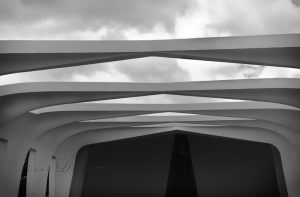 While no posts were forthcoming in July, I had been busy going through my 3000+ images from the Hawaii shoot. Admittedly, while I did reach the 1% keeper goal of about 30-40 photos, this process in itself created challenges within me to see things I had not considered or even forgot when I was actually taking the said photo “keepers.” In other words, so much time and so many different scenes have come in between the actual shots and then the processing of these shots that I had forgotten many of the details. Note: the major ones I remembered, but the nuances to many shots were lost to memory. Even while I was taking these many shots in Hawaii I wish I had a way to record along with the photos themselves (a tag, if you will) what I was actually thinking or trying to do at the time.
While no posts were forthcoming in July, I had been busy going through my 3000+ images from the Hawaii shoot. Admittedly, while I did reach the 1% keeper goal of about 30-40 photos, this process in itself created challenges within me to see things I had not considered or even forgot when I was actually taking the said photo “keepers.” In other words, so much time and so many different scenes have come in between the actual shots and then the processing of these shots that I had forgotten many of the details. Note: the major ones I remembered, but the nuances to many shots were lost to memory. Even while I was taking these many shots in Hawaii I wish I had a way to record along with the photos themselves (a tag, if you will) what I was actually thinking or trying to do at the time.
That being said, I was forced in hindsight to find another way to accomplish the above. What I decided to do was allow myself to “Be” with the shot (I know this sounds corny and hackneyed); in other words to stop and “smell the roses.” If there was a shot to begin with, then I should be able to recover it within perceptual memory.
Honestly, this is not an easy process, but it does work.
The current photo to this post is of the USS Arizona Memorial looking upward. I’ve always felt a reverence for Pearl Harbor and the lives that were lost. I felt privileged to be able to visit this site, but upon arriving I found that the sheer number of visitors actually detracted from the solemnity of the site. This is not to cast aspersions on anyone about the actual memorial but it was difficult to find peace and reflection with so many visitors coming and going. The positive is that Americans still care and feel deeply about this event.
There was definitely a solemnity to the Harbor and I tried to capture it photographically. One way I did this is to look skyward from where the bombs fell, and I found a unique ceiling to the Memorial, intended or not in it design, I do not know. Nonetheless, it was beautiful and reflected the simplicity of the sacrifice that many men gave for their country.
The posted photo was taken with a Canon 5 DS, EF 70-200mm f/4L IS USM @ 70mm, f/10, 1/500, ISO 400, -1/3 stop compensation, processed with DxO Optics Pro 11, using a Gradient map, and Color Efex Pro.
Existential Opportunities
- At August 25, 2017
- By Firstmate
- In Canon EOS 5DS, Hawaii, Long Exposure
 0
0
Hawaii presents itself as a paradise, and aptly so, since one can fashion his/her ideas around what they consider to be paradise wherever they find themselves: namely, there is something about an: island-an almost perfect climate-and the isolation/uniqueness of terrain— which lends itself to believe fantasy-can-come-true (“Fantasy Island”, if you will).
Such thinking can become dangerous to a photographer since they are supposed to be there to catch the shot. Is it the shot of their fantasy or is it the shot of what is. To be truthfully honest with you, I believe it is a combination of both, which in and of itself even poses more complexity onto the existential moment. Such is the excitement of photography.
And that is what my photographic journey in Hawaii was about: namely, a myriad of possible shots around a single event; trying to get the most of that time slot and location, and understanding how to best capture the scene visually onto a two dimensional medium. This may be a clinical and sterile description, but technically that is all the camera really cares about, since it is not a thinking and feeling entity.
The time in Hawaii was divided into two parts: my photographic workshop and my personal vacation time. In the former part I was exposed to optimal light shooting conditions, namely soft light in early morning and evening. In the latter part, I was at the whims of when it was convenient for me to be at various sites to actually fit the sites into my time stay in Hawaii (generally at mid-day time of lighting conditions).
How to adjust to the above very different ways of taking photographs? I did my best, meaning I tried to focus on certain elements of the shot, even though the light was not the best.
The currently posted shot is of a beach on the eastern shore of Oahu, around the Makapu’u Beach, where the sun was in and out of the clouds, with even rain clouds threatening every minute (such is Hawaii). The wind and wave action were dynamic, at least for an Eastern Coast Mainlander. The light was not perfect but the wave motion was. This is what I tried to capture.
The shot was taken with a Canon 5 DS, EF24-105mm f/4L IS USM, @ 93mm, f/22, 1/8″, ISO 50. I may have had a 3-stop neutral density filter on, but I am not sure about this.
Hawaiian Adventure
- At August 14, 2017
- By Firstmate
- In Canon EOS 5DS, DxO Optics Pro, Hawaii, Nik Software
 0
0
A little over a month ago I returned from Hawaii and since then have been processing photos taken there. It was an adventure in the real sense of the word since the State of Hawaii is so unique in many ways. I had signed up to take the Canon Live Learning Workshop and knew it would be challenging simply due to the hours I would be up (early mornings and late nights), but also the conditions (heat, terrain) and distances I would have to travel. Without going into detail, let it suffice to say the first day of the shoot, I was up at 3:30 AM and came back to my hotel room at 1 AM the next day.
The shoot started at Laupahoehoe Point on the Big Island, proceeded to Akaka Falls, then to Punalu’u Black Sand Beach, then finally at Kilauea Volcano in Volcanoes National Park. It was an exhausting day but one which challenged me to think on my feet, meaning that I actually started seriously using manual mode and also playing with the three components of EV (exposure value), namely shutter speed, f-setting, and ISO, in a creative manner. I made many mistakes, and there were lost opportunities, but ultimately I knew when the opportunities were lost.
While I would have liked to have made more creative shots, I can honestly say I grew in my understanding of applied photography despite not making the best shots I could have.
The current shot is of Kilauea Volcano taken in the afternoon of the day before my night shoot of the volcano and Milky Way. My supportive wife was with me and it was my first introduction to Kilauea, my position being right in front of the so-called rangers station some distance from the volcano, simply because the emitting gases would not allow a closer approach.
The shot was taken with a Canon 5 DS, EF24-105mm f/4L IS USM @ 105mm, f/8, 1/400, 1600 ISO, manual exposure, and no tripod.
Conditioning
- At June 07, 2017
- By Firstmate
- In Canon EOS 5DS, DxO Optics Pro, Nik Software, RI
 0
0
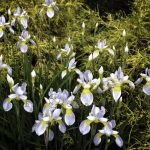 Never did I think that photography would be so demanding, at least if you wanted to take more than just a snapshot, but rather a special moment that immediately grabs and holds one’s vision. In other words, an “Ah” moment. The moment which is special and captures the essence of the vision before you.
Never did I think that photography would be so demanding, at least if you wanted to take more than just a snapshot, but rather a special moment that immediately grabs and holds one’s vision. In other words, an “Ah” moment. The moment which is special and captures the essence of the vision before you.
One truly must get into physical shape as well as visual (i.e., the art of seeing) shape and technical shape (knowing one’s tools of the trade). It has been a most deplorably wet spring here in New England this year. Instead of being outside and shooting, I have been inside and studying photography. Both are obviously needed, but being outside and shooting is more fun.
I have been preparing for my photo shoot on the Big Island of Hawaii at the end of this month, anticipating what I would need for certain situations, namely, night shooting of the Milky Way with possible inclusions of Mt. Kilauea lava flows, high contrast shots of the oceans and waves, sunrises and sunsets on ocean panoramas, rain forests and tropical gardens with shadows and probable glare, and last but not least surfers and denizens of the Hawaiian paradise. In this regard, I am bringing along rain gear for me and my camera, and a host of various filters to assist in getting the best shot. I wish I did not need to bring along my MacBook Air, simply because I like to travel light. But I guess there is a price to pay for the perfect shot(s).
The currently posted photo is of white irises around our house. They are abundant this spring and have looked the best they ever have due to the rainy spring. The photo was taken with a Canon 5DS, EF16-35mm f/2.8L USM @ 35mm, f/8.0, 1/50, ISO 100, processed with DxO Optics Pro 11, Adobe Camera Raw, using a Photoshop gradient map, and Color Efex Pro.
The Mind’s Eye
- At May 24, 2017
- By Firstmate
- In Lumenzia, Nik Software, Photographic Technique
 0
0
Over the last few weeks I’ve been preparing for my upcoming photo shoot in Hawaii in June. I’m anticipating challenging conditions both physically (heat and cold) and photographically (lighting extremes). I am less concerned about the former and more concerned about the latter. Consequently, I acquired graduated ND filters as well as standard ND filters of varying densities to deal with Hawaiian light.
Also, I discovered a wonderful product for my screw-in filters, namely Xume magnetic adaptors, which allow me to by-pass the screw-ins and simply stick the filters on magnetically. They were a little costly but, when in the field shooting, time is of the essence.
I’ve included the current blog post photo to summarize the current state of my thinking, photographically. That is, when I see a scene, I not only am seeing the scene but also I am projecting onto this scene various personal attributes (how I value certain things as colors, light, object as well emotive elements as warmth, aversion, mystery, joy, etc.). The current blog photo was taken with a Canon Powershot G2 camera many years ago. It was highly contrasted and blown out with mid-day light. Only by using some post-processing techniques was I able to salvage what my mind’s eye saw at that moment. The mind’s eye image stayed within me for years and only recently due to learning and using techniques to shape the image to conform to my mind’s eye was I able to get the image before you.
The current image was shot high above Positano, Italy, in May 2011. Post processing used Lumenzia PS Extension, a gradient map, as well as Color Efex Pro.
Creating
- At April 04, 2017
- By Firstmate
- In Canon 30D, Cape Cod, Composition, Key West, Nik Software
 0
0
The title to this post is meant to be interpreted simply, namely, describe the ad hoc or even de factor act of creating something. Naturally, it is not creating something from nothing (even in the extend sense of that word), but the act of combining elements to make a new presentation or composition of something.
In photography this is called compositing (creating a compo), and I have stayed away from this type of post-processing, simply because it is an art unto itself, and I wanted to get into the act of capturing what creation presents before my camera and lens. This was difficulty enough of a task for me.
Although recently I have relented and attempts to create a combo. You see, I loved the sky in one photograph and in another photograph I love the main element (the condor) and not the background (the sky). So, I wanted to meld the two to create a blend of the best.
The current compo in this post was created thusly: Both photos were taken with a Canon 30D and 24-105mm f/4L IS USM lens. The sky was shot off of Chatham Lighthouse Beach on Cape Cod, f/4, 1/5000, ISO 800. The condor was shot in Key West, Florida, f/14, 1/100, ISO 100. The actual compo was processed with Nik Color Efex Pro.
Luminosity Masks to the Rescue
- At March 30, 2017
- By Firstmate
- In Canon 30D, DxO Optics Pro, Key West, Lumenzia, Nik Software
 0
0
In an effort to cover my mistakes when learning the skills of photography, either through down and out errors in not attending to my camera settings for particular shots or just due to being “forced” to take the shot just to get the shot, I have been learning options in post processing with Photoshop. One particularly powerful option which attracted me for some time was luminosity masks. I tried using them in the past but it seemed a chore to use them. However, I finally developed my own action to automate the process. This was a better approach, but it still was a more than simple approach.
Then I discovered Lumenzia by Greg Benz, which is a plugin for Photoshop and is ridiculously inexpensive. In a nutshell, Lumenzia (which is actually a suite of several small programs doing more than luminosity masks) allows the user to try different luminosity masks before committing to a particular one best suited for their needs. It does have a learning curve and one has to know what one is doing, but it’s streamlined approach is such that one can grow into the program (aka plugin).
The current photograph was taken in Key West several years ago in early Spring. It was taken with a Canon 30D, 24-105mm lens (f/4) @ 55mm, f/9, 1/250, ISO 100, processed with DxO Optics Pro, Adobe Camera Raw, Lumenzia, and Color Efex Pro.

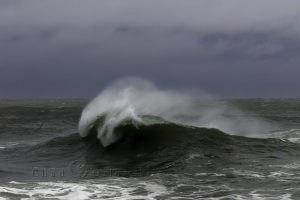
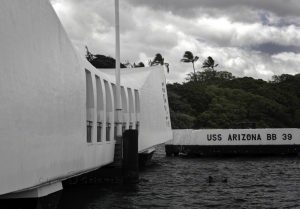

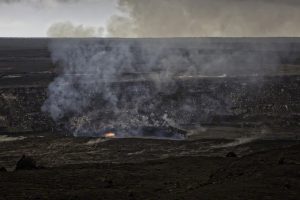

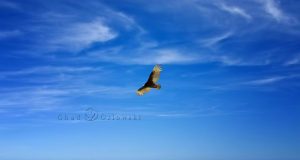
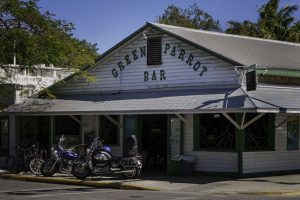
Recent Comments